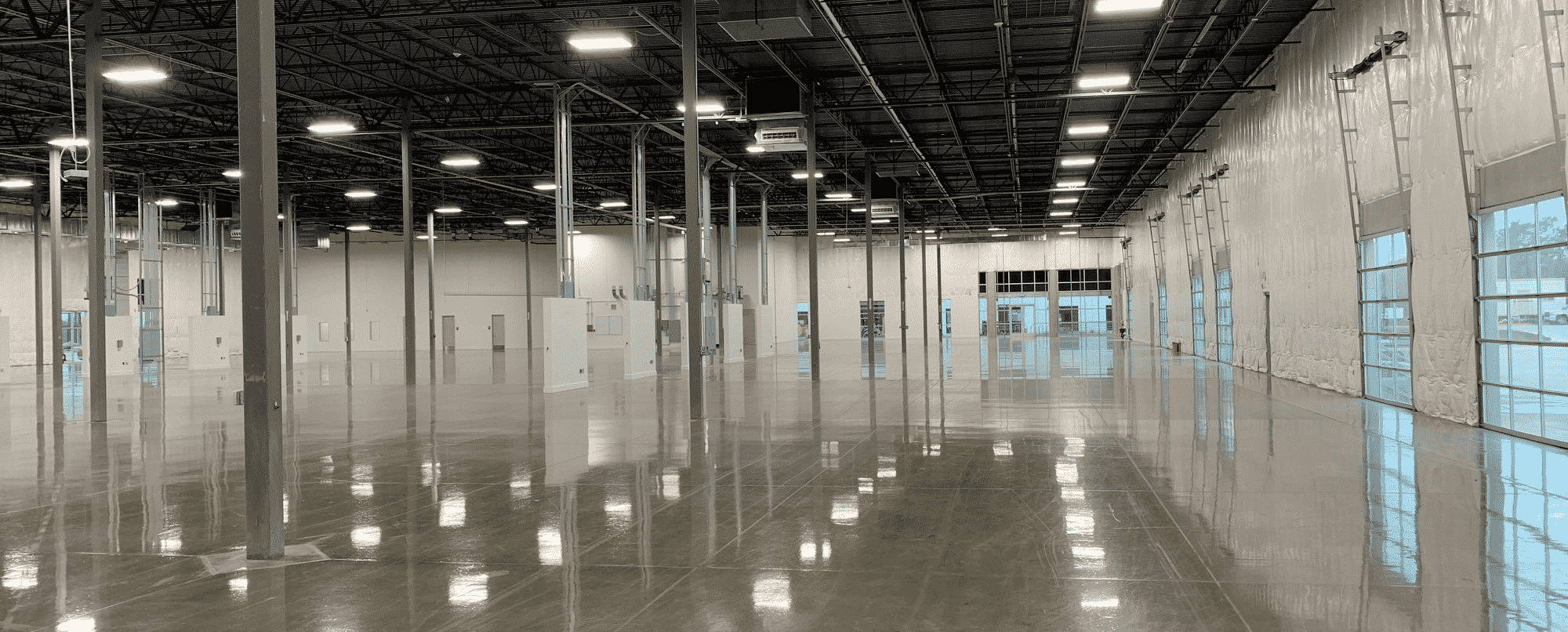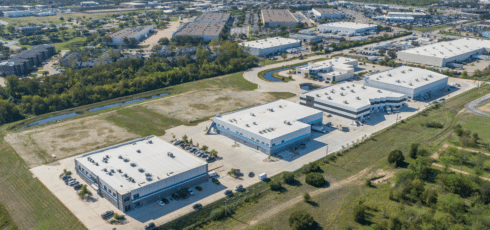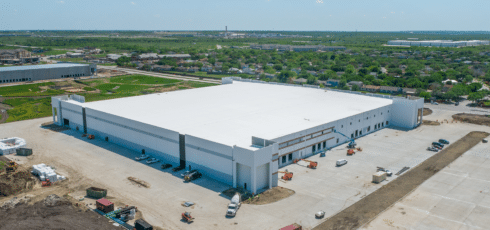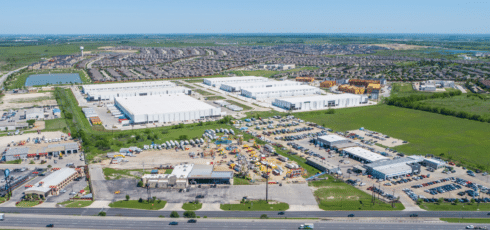Whether you’ve outgrown your current facility and are relocating before your original lease expires or you’re downsizing due to production changes, there are a number of reasons you may consider subleasing your industrial space.
At AQUILA, we’ve successfully subleased space on behalf of numerous clients. As a tenant, it’s important to understand each step of the process and to know what may be expected of you at each step of the way.
Read Next: 5 Reasons Your Sublease May Not Be Moving (And How to Move Forward)
In this article, we’ll explain why you might consider subleasing your warehouse or manufacturing facility and guide you through each step of the process.
Why Sublease Your Warehouse or Manufacturing Space?
There are a number of reasons you may consider subleasing your space. You may find that you are no longer utilizing your full footprint and want to sublease the unused space in order to offset costs, or maybe you’ve outgrown your current facility and need to relocate to a larger location, but still have term remaining on your lease.
As a manufacturer, if a contract is canceled, you may no longer need the same amount of production space, and it can make sense to consolidate your footprint and sublease the remainder of your space.
Or maybe you’ve shifted from in-house shipping to a third-party logistics provider. This can also shrink your company’s footprint.
On the other hand, an unexpected large contract may mean you need more manufacturing space immediately. Or if you decided to bring a certain step in-house to become more efficient, you may require more space to do so.
Sometimes a change in your product can also cause you to need to sublease your space. If you begin shipping or assembling larger products you may need a larger space. For example, Bay Advanced Technologies, one of our industrial clients, began assembling larger products which created the need for more warehouse space over time.
If there’s no room to expand within your current park or building, it may make sense to relocate to a larger facility today and put your old space on the sublease market.
Finally, it’s not uncommon for companies with numerous locations to consolidate operations under one roof or relocate based on supply chain or shifting regional demand. This may mean leaving behind an empty facility with lease term remaining. Subleasing this space can help offset the remaining rent obligation.
Step 1: Analyze Your Lease & Understand Your Options
Whatever the reason, if you decide that it makes sense to sublease your space, the first thing you should do is examine the sublease rights in your lease alongside your broker.
Analyze Your Lease
First, you need to understand what consent restrictions and recapture rights your landlord has on your space. These were determined during your original lease negotiations and will be detailed in the language of your lease.
You may also need to notify your landlord when you decide to sublease. This is less common in industrial leases, but, if your lease necessitates it, your broker should be familiar with what is required and will help you submit your notification.
Landlord Consent
You also need to understand what rights your landlord has to withhold or delay their consent to your sublease.
Ideally, your lease will contain language preventing your landlord from unreasonably withholding, conditioning, or delaying their consent to a sublease.
You also need to read your lease carefully with your broker to make sure that there are no restrictions on what type of tenant can take over your lease. Some landlords may also want to prevent you from subleasing to an existing tenant in the building or restrict your right to sublease to tenants who have shown interest in the building directly.
Also, there may or may not be a timeline associated with how long of a period a landlord may have to provide or deny consent. A good tenant rep broker will have conversations early and often with the landlord and continue to push for the landlord’s consent in a timely fashion.
Recapture Rights
A recapture right allows the landlord to take back your entire suite (or premises as outlined in your lease), should you request to sublease.
The landlord can choose to exact its recapture rights once a subtenant is secured and a sublease agreement is signed and submitted to the landlord for approval.
AQUILA PRO TIP
Limit Recapture Rights Before You Sign Your Lease
A good tenant representation broker should ensure this right only applies in the case that you request to sublease your entire space for the remainder of the term.
Imagine you occupy a 50,000-square-foot space with eight years left on your term. Your production needs suddenly drop and you only require half the amount of space. If your landlord has recapture rights that are not limited to requests for the entire space and entire term, your landlord could take back your entire space, or essentially force the denial of the sublease. Many factors can come into play in a scenario like this and it is important to have a good tenant representation broker with your best interests in mind from the start.
It’s important to fully understand your recapture rights before you begin the sublease process in order to evaluate all of your options and understand all potential outcomes. Your tenant representation broker will be able to help you navigate this language and any potential implications.
Understand Your Options
At this same time, you’ll want to work with your broker to understand your options and sublease strategy.
What’s driving your sublease? Are you in the market for new space? Did you take on extra responsibility in your section of the supply chain and need to expand? Or are you downsizing due to product changes?
Is your relocation or downsize contingent upon finding a subtenant? Or do you have plans to move on a certain date?
If you’re subleasing a portion of your space, are you willing to take on the cost to demise the space? Or are you open to a shared environment?
Finally, what concessions can you offer? Is there any unused TI allowance that can be passed on to the subtenant? Are you offering the space empty or furnished?
All of this will help your broker market and price your sublease appropriately and better understand your project timeline and priorities.
Step 2: Bring Your Sublease to Market
Next, your broker will help you set an asking price for your sublease and begin the process of marketing your space.
Determine Your Asking Price
There are several factors that can influence the price your broker recommends for your sublease. These will include:
- Overall market conditions
- Your rental rate
- The condition and layout of the space
- The property’s asking rate and comparable transactions within the building
- Market asking rates and comparable transactions
- The urgency of securing a subtenant
- And more
Sometimes you can even profit from a sublease. If the market is competitive and your rental rate is well below market you may be able to secure a sublease rate above your own rental obligation.
AQUILA PRO TIP
Right to Retain Profits
Make sure that your lease allows you to keep a portion of any profit earned in your sublease. It is standard for landlords to request 50% of any profits made. However, it’s not uncommon in industrial leases, especially when a tenant did not have a tenant representative on their side during the negotiations, for the landlord to have rights to 100% of any profit earned. This is why it’s important for your broker to read through your lease carefully and negotiate important details such as this.
It is much more common, however, for companies to sublease their space at a rate lower than what they are obligated to pay in their lease. If your rental rate is at or above market, or there’s an excess of supply compared to demand, it can often make sense to secure a tenant today at a slight discount, than to hold out for several months waiting for a tenant to cover your full obligation. Remember, subtenants do not receive many of the same rights as direct tenants (such as renewal and expansion options) so it’s reasonable to expect that they may not pay a rate comparable to tenants negotiating with the building directly.
For example, imagine you have 36 months remaining on a 10,000-square-foot lease at $1.00 per square foot per month. If you agree to terms with a subtenant today at a $0.85 per square foot per month rental rate for the full 36-month term, you’ll recover 85% of your remaining rent obligation.
If you hold out for a tenant willing to pay the full $1.00 per square foot per month rate, you risk losing more money in downtime than you gain in monthly income. If it takes you six months to secure a tenant for the full $0.85 per square foot per month rate (a not uncommon result): the six months of lost income result in just an 84% recovery of your total rental obligation. In addition, as the term length on a sublease deteriorates the market typically expects additional discounts – so as time goes on the likelihood of securing that higher rental rate goes down.
How receptive the market is to your rental rate is influenced mainly by the amount of term remaining on a sublease.
Your broker should provide you with a custom recovery analysis to give estimated best and worst-case recovery scenarios based on your lease situation and the market. A good broker will update this recovery analysis with each offer in order to show you how an offer impacts the whole picture.
Market Your Property
With all of this information in hand, your broker will put together marketing materials to promote your sublease. At a minimum, these materials should include:
- A sublease flyer that features images of the space, a list of property and suite-specific features and highlights, details including size, term, date available and rate, leasing contact information, a location map, etc.
- A listing page on the brokerage firm’s website, making your space easily accessible online and via search
- A listing on commercial real estate sites like Costar and LoopNet; these sites are a broker’s first stop when searching for spaces for their clients
- A spot in the firm’s available inventory report which is distributed on a monthly basis to the brokerage community
AQUILA PRO TIP
Find a Brokerage Firm with Marketing Horsepower
In addition to these basic marketing materials, at AQUILA we recommend taking professional photography of your space in order to maximize its appeal online and in print collateral. A high-power marketing department will also be able to provide additional out-of-the-box services and ideas as needed like video, advertising, events, branding, and more.
Engage Prospective Tenants
The aforementioned marketing materials will be used to get your property in front of prospective tenants and brokers.
Additionally, your broker will monitor incoming tenant requirements and send out your space to tenants that may be a good fit. Your broker will also monitor deals in the market and make sure your space is seen by any potential subtenants.
Your broker will also be familiar with other local tenant representation brokers and will communicate directly with them to make sure everyone is aware of the opportunity. This will help keep your property top of mind.
Property Tours
Bringing tenants into the space for property tours is one of the main parts of the prospecting process. Make sure you prepare for your broker to bring groups of people through your space during the day. Your broker can coordinate these tours with you to ensure the most convenient days and times for you.
If the space is empty, these should be easy to coordinate. Your broker will likely just need a copy of the key to your space in order to gain access without disturbing you for each tour.
If your company is still occupying the space, be sure to keep the space clean and welcoming. Think of it like selling a house: it’s best practice for knick-knacks and clutter to be tucked away in order to present an appealing space the prospect can see themselves moving into.
Reporting
Your broker should provide regular reports on marketing efforts to keep you up to speed on the activity on your space.
This should include a record of any tours or inquiries, an update on any proposals received or negotiations, and a recap of marketing efforts including emails, new photography or video, advertising performance, etc.
Step 3: Negotiating Your Sublease
Once a tenant is interested in your space, their broker will submit a request for proposal or letter of intent to begin the negotiation process for the sublease.
Read Now: The Step-by-Step Guide to the Site Selection Process
Your broker will present the request to you along with analysis and recommendations for the negotiations. They will help you craft a response, and guide you through the ongoing negotiations until terms are agreed upon.
If there are multiple parties interested in your space, your broker will help you leverage this interest to get you the best possible terms.
Once you have come to an agreement and negotiations are closed, you’ll need to finalize the actual sublease agreement with the subtenant (this is a legal document that always helps to have legal counsel create and review as well), and begin conversations with your landlord.
The exact process and protocols for this should be outlined in your lease, and your broker will play an integral part in guiding you through this process and pushing the agreement through with the landlord.
Step 4: The Subtenant Takes Over the Space
Finally, once the subtenant is approved by the landlord, the final step is for you to move out of the space (if you haven’t yet) and meet any criteria you agreed to in the sublease document such as repainting or making any repairs that were agreed to so the subtenant can move in.
Your broker will also help you set up a process to begin collecting rent from your new subtenant. Your landlord will expect to keep receiving rent payments directly from you, and you will be responsible for collecting from the subtenant.
Now that you understand the process for subleasing your space, here are some other articles that you might find helpful.
- 5 Key Questions to Ask Before Hiring a Sublease Broker
- 7 Benefits of Hiring a Tenant Representation Broker
- 5 Reasons Your Sublease May Not Be Moving (And How to Move Forward)
- Who Are the Best Industrial Brokerage Firms in Austin Texas?
If you’d like to speak to one of our industrial tenant representation brokers about your subleasing needs, please schedule a consultation today.












